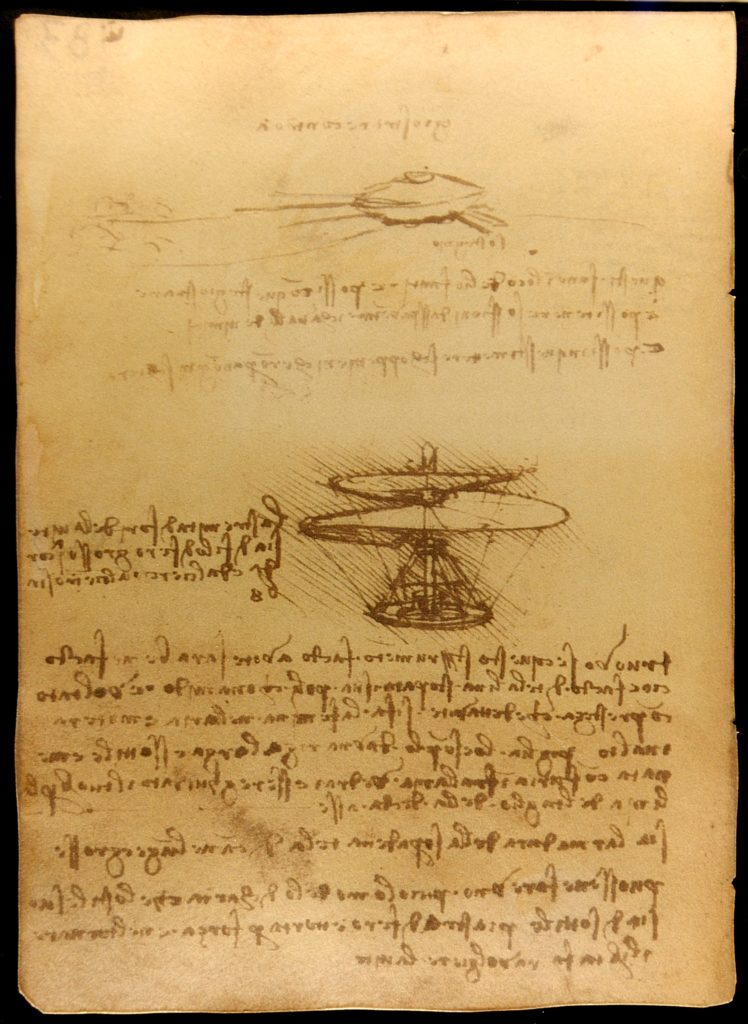Around the year 1490 Leonardo da Vinci drew this helicopter in one of his notebooks, which he called “Aerial Screw”. Why did he give it that name? He believed that the rotor of his machine would twist and penetrate the air, just as a screw or a drill does in the wood when they turn. In this way, Leonardo correctly interpreted that the air had consistency and we could lean on it to ascend.

Description and operation of the Leonardo da Vinci helicopter
The helicopter, whose structure measures about 15 meters in diameter, consists of two main parts:
Helical rotor
On a structure of canes and wood, a spiral of linen fabric treated with starch is joined to cover the pores. A metal strip covers the outer edge of the spiral to reinforce it.
The central mast is fixed with four rods, which the crew would have to push to keep the rotor rotating.
Fixed disk under the rotor
The crew would walk on this disk and push the rotor rods. This makes the propeller rotate on the base.
Limitations
The strength of four men would not have been enough to lift the weight of this structure. The helicopter might have been able to fly with a powerful modern engine. It would also be necessary to drastically reduce its size and weight.
Leonardo also did not realize that when he got up from the ground, the fixed disc of the base would start to turn in the opposite direction to the propeller. His helicopter would have needed a tail rotor, as modern helicopters incorporate, to prevent the rotation of the base.
The historical background of the helicopter
Around 400 B.C., the “bamboo dragonfly” existed in China. A toy made up of a propeller attached to a thin, cylindrical stick. Turning this stick between the hands quickly, the artifact quickly rose upwards.

You may want to see drawings of other flying machines thought up by Leonardo da Vinci in this other article in El Reloj de Sol.
You can find more information about Leonardo’s inventions in this Wikipedia article.

